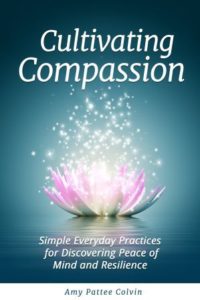What is Embodied Mindfulness
Meditation and mindfulness are excellent tools for calming the mind, releasing stress, and balancing emotions. With consistent practice, mindfulness and meditation offer many benefits for both physical and mental health. Similarly, physical exercise is widely recognized as an essential aspect of a healthy lifestyle. Moving your body is vital, and many of us make it a priority to get out and exercise regularly.
Clearly, both meditation and physical exercise lead to greater health, yet we often view the two activities as separate. Qigong provides a way to embody mindfulness.
In the West, commonly taught meditation practices emphasize quieting the mind, being still in the body, and monitoring and managing our thoughts.
In contrast, my meditation teacher of more than 20 years, a Chinese man raised in Malaysia, emphasizes learning how to connect with our breath and internal energy, qi, then flow with that qi in unstructured movement. This can be done seated or standing. This process of harmonizing with our body’s higher-self, our inner-wisdom, and letting innate movement bubble up is a profound method for healing from physical, emotional, or mental trauma.
Harmonize Mind and Body
Meditation is a beautiful practice that supports us in a variety of ways. It helps us bring our life back into perspective, release tension, and stay in the present moment.
Sometimes meditation in stillness comes effortlessly and with ease. At other times, our minds or bodies don’t want to settle down, and frustration arises as you sit on on your cushion while your mind zips from one thought to another.
As humans, we are intellectual creatures with immensely powerful minds. At the same time, we’re also physical beings. Our consciousness, our internal wisdom, our essence, and energy reside not merely in our mind, but in our bodies as well.
Movement and exercise release dopamine and other endorphins which affect our thoughts and emotions. After a long run, swim, hike, or workout have you noticed that your mind feels lighter, clearer, and better able to focus?
Movement and deep breathing awakens our qi and helps it flow throughout our entire being. However, when we move simply for the sake of exercise, we do not access the full benefits available to us.
Qiqong is an embodied mindfulness practice that harmonizes the intention of meditation with physical movement.
Moving with focused intention, we unlock the energy and qi that affects all parts of our physical body.
When we intentionally bring awareness to our physical form, both our mind and body flourish. With practice, our bodies may begin to flow and harmonize with qi and movement arises without thought.
Unfortunately, modern life often leads to a disconnect between mind and body. Many people aren’t in tune with how their muscles feel, their posture, and the physical response to strong emotions in their bodies. For a variety of reasons, people sometimes ignore what it feels like to have a body or perhaps ignore parts of their body.
Qigong is a simple, relaxed, effective, and natural way to reestablish the connection of our mind, body, and energy.
How to Be in Your Body
Mind and body influence one another. As conscious beings, we can intentionally use each to nurture the other. Through movement, we begin to settle our minds into stillness. Through stillness, we begin to connect with the flow of our qi. This is a beautiful example of balancing the duality so often found in life.
When your mind becomes fully immersed in the flow and movement of your qigong practice, a unification occurs within your entire being.
The mind is softly focused on the movements of the practice, and external thoughts or worries begin to fade. We begin to connect deeply to the present moment.
Sometimes during meditation without movement, it can be challenging to find the inner peace and connectedness that qigong allows. Qigong provides us with a multi-layered approach that connects us with both body and mind.
Once our mind has found stillness and integration through intentional movement and breath, we can begin to bring sit in stillness with greater ease.
The duality of yin and yang are always alive within us, and qigong is one of those rare practices that bring mindful awareness to both mind and matter within us.
Try This Simple Qigong Practice to Embody Mindfulness
Get in position
- Stand with your feet hip-width apart, toes pointing straight ahead. Your legs are strong, but your knees are not locked; they have a gentle softness to them.
- Visualize your tailbone reaching down toward the earth and the crown of your head reaching into the sky above.
- Place your hands, fingertips together, palms up at the bottom of your abdomen as if you’re gently cradling a large ball.
- Breathe into your belly and connect with the energy of the tan tien. (The tan tien, or dantien, is the energy center of your body. It is three finger widths below your navel in the center of the body.)
- Take a few breaths and visualize a golden glow at that energy center.
Harmonize Mind and Body and Energy Flow
- Next, as you inhale, imagine that golden glow of energy flowing upward from the tan tien to your heart.
- As you exhale, draw that golden glow back down to the tan tien. Breathe this way a few times.
- Then, when you’re ready, on the next inhalation draw your hands up the front of your body as the energy rises.
- At the level of the heart turn your palms down and exhale lowering the hands back down to the bottom of your abdomen.
- Inhale drawing the upward facing palms and your qi up.
- Exhale lowering the downward facing palms and your qi down.
- Continue with this breath and movement pattern for as long as you like.
- After time and practice notice if this movement becomes so natural that it no longer takes active thought and time passes effortlessly; when this happens you are truly connected to your body and its energy flow rather than your mind.
Why This Energy Flow Matters
- This method of intentional breathing and movement creates a resilient connection between your energy center and heart.
- This is a simple yet powerful exercise and can be practiced nearly anywhere.
- It is a lovely way to help you stay centered when you’re feeling off balance.
- When you’re centered, your light naturally shines outward.
Cultivating A Regular Qigong Practice
To fully experience the benefits of qigong, it’s essential to be consistent with your practice. Neuropsychologist, Donald Hebb, first said in 1949, “neurons that fire together wire together,” to describe how pathways in the brain are trainable and with practice become reinforced. To experience the benefits of qigong, continued consistent practice is required.
The practice sessions don’t always need to be long, but a daily habit of connecting to your breath and intentionally moving is beneficial, even if just for a minute or two multiple times a day. Join me on Monday mornings for free Zoom qigong classes to help inspire you to practice daily.
To really deepen your practice and learn how to integrate it into everyday life, join me for an International Meditation Retreat, where every day we’ll practice embodied mindfulness and compassion meditation. Or enroll in an upcoming BodyMind IntelliSense program filled with short daily lessons to help you integrate intention, present moment awareness, and mindfulness into life.







